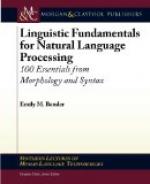On similar principles we may explain the pantomime plays sometimes performed, where the most entertaining scenes of love and murder are represented, but not a word spoken.
Three things are always to be born in mind in the use and study of all language: 1st, the thing signified; 2d, the idea of the thing; and 3d, the word or sign chosen to represent it.
Things exist.
Thinking beings conceive ideas of things.
Those who employ language adopt sounds or signs to convey those ideas to others.
On these obvious principles rest the whole superstructure of all language, spoken or written. Objects are presented to the mind, impressions are there made, which, retained, constitute the idea, and, by agreement, certain words are employed as the future signs or representations of those ideas. If we saw an object in early life and knew its name, the mention of that name will recal afresh the idea which had long lain dormant in the memory, (if I may so speak,) and we can converse about it as correctly as when we first saw it.
These principles, I have said, hold good in all languages. Proof of this may not improperly be offered here, provided it be not too prolix. I will endeavor to be brief.
In an open area of sufficient dimensions is congregated a delegation from every language under heaven. All are so arranged as to face a common center. A white horse is led into that spot and all look at the living animal which stands before them. The same impression must be made on all minds so far as a single animal is concerned. But as the whole is made up of parts, so their minds will soon diverge from a single idea, and one will think of his size, compared with other horses; another of his form; another of his color. Some will think of his noble appearance, others of his ability to travel, or (in jockey phrase) his speed. The farrier will look for his blemishes, to see if he is sound, and the jockey at his teeth, to guess at his age. The anatomist will, in thought, dissect him into parts and see every bone, sinew, cartilage, blood vessel, his stomach, lungs, liver, heart, entrails; every part will be laid open; and while the thoughtless urchin sees a single object—a white horse—others will, at a single glance, read volumes of instruction. Oh! the importance of knowledge! how little is it regarded! What funds of instruction might be gathered from the lessons every where presented to the mind!




